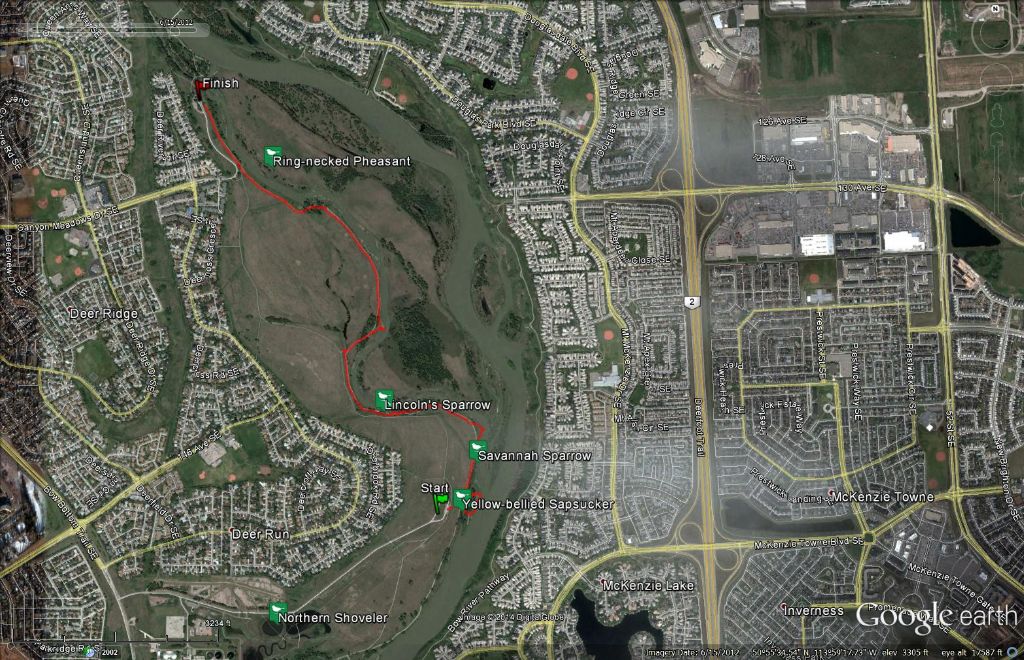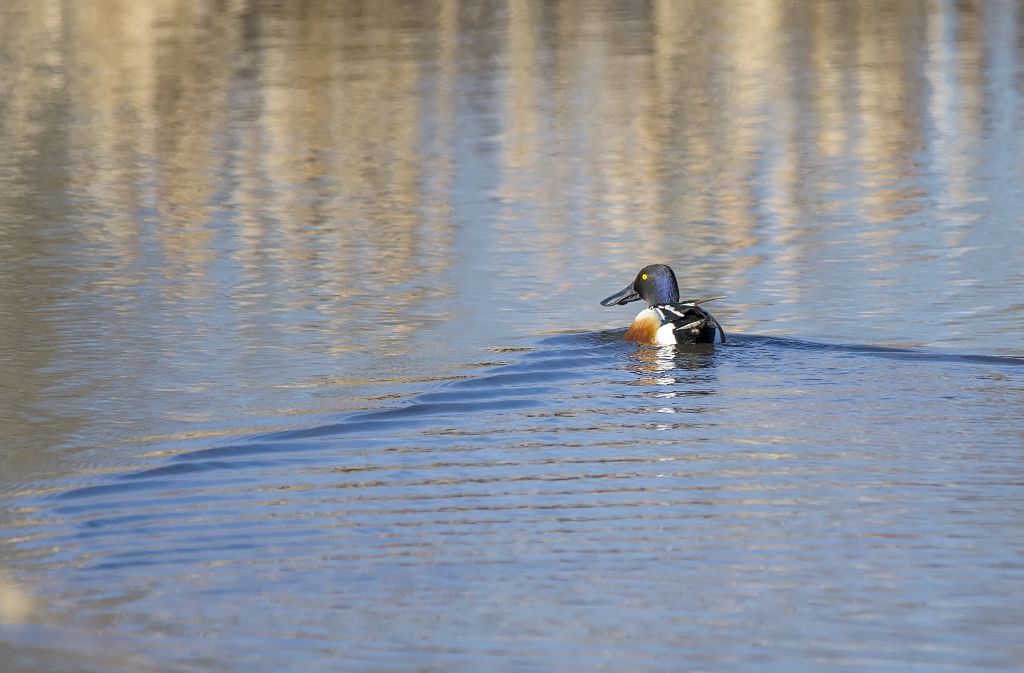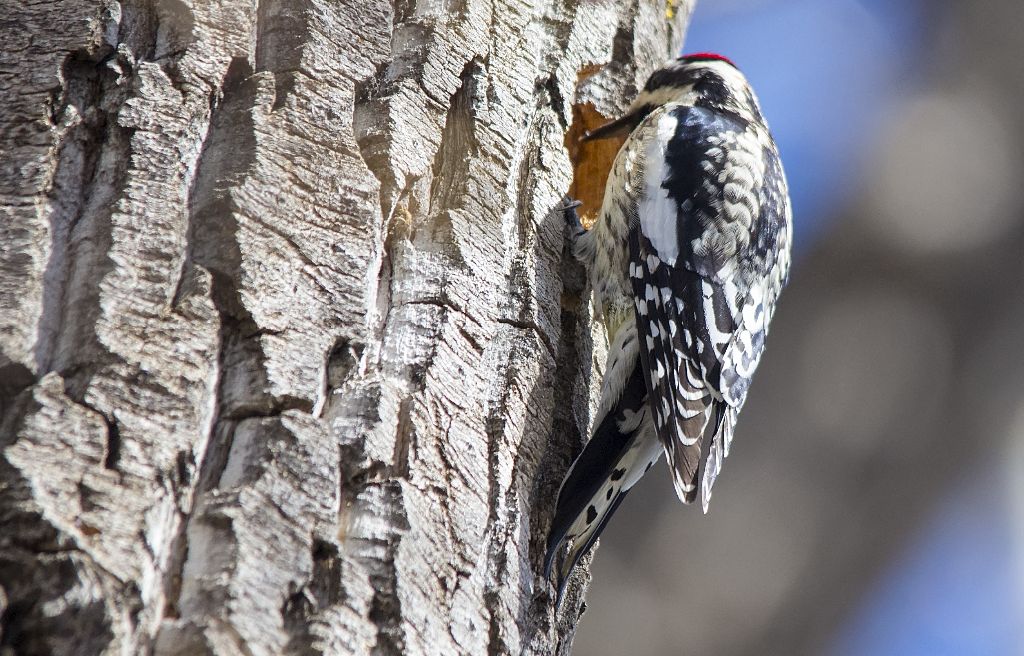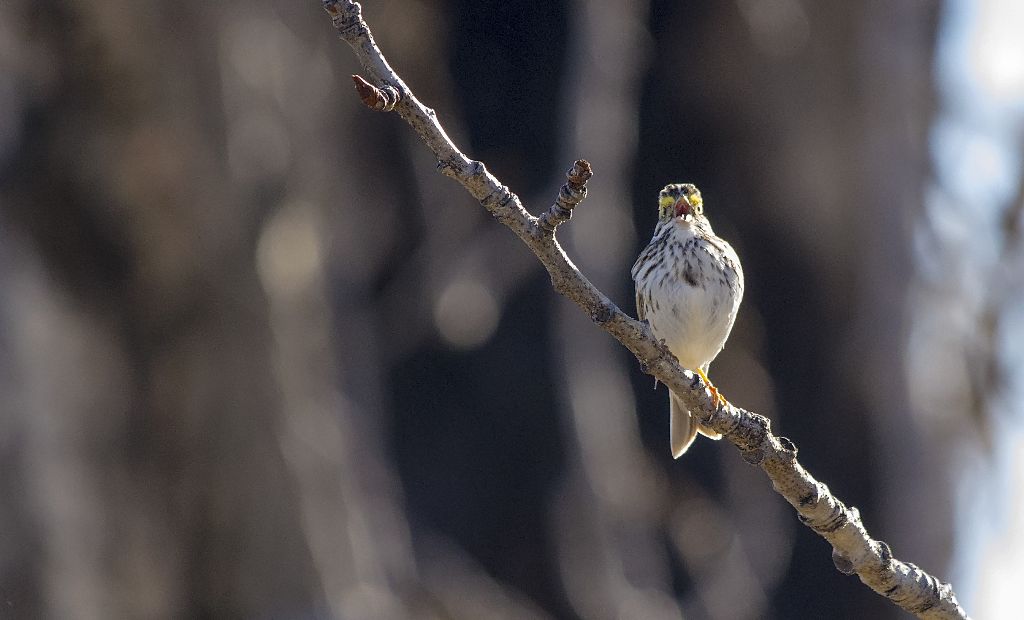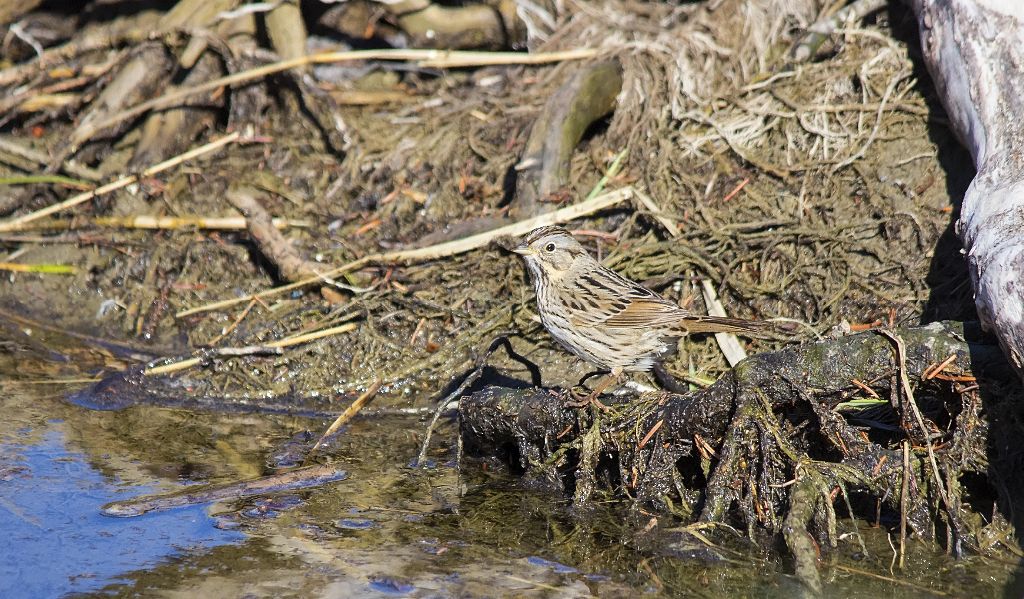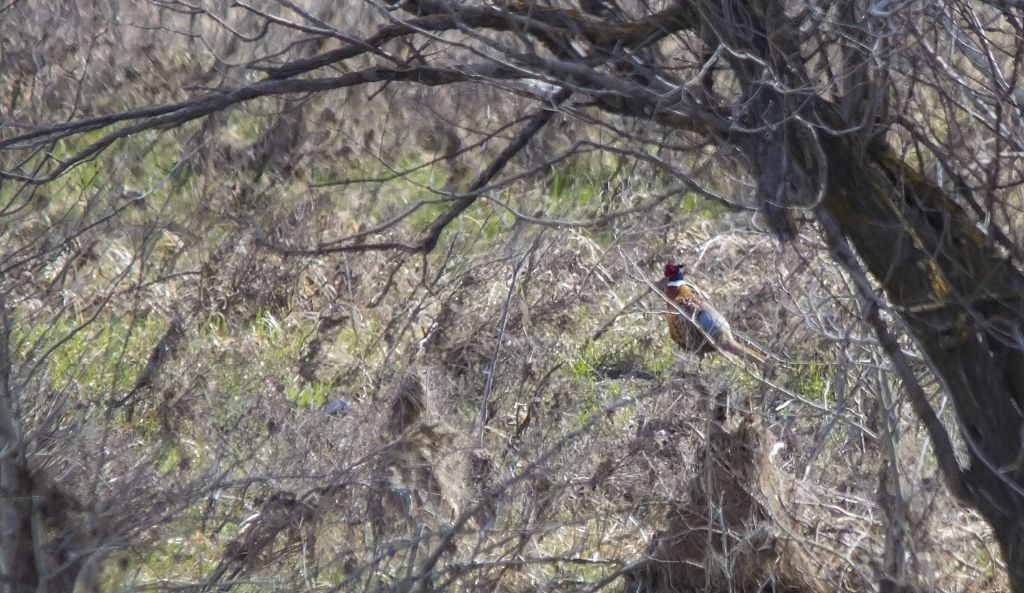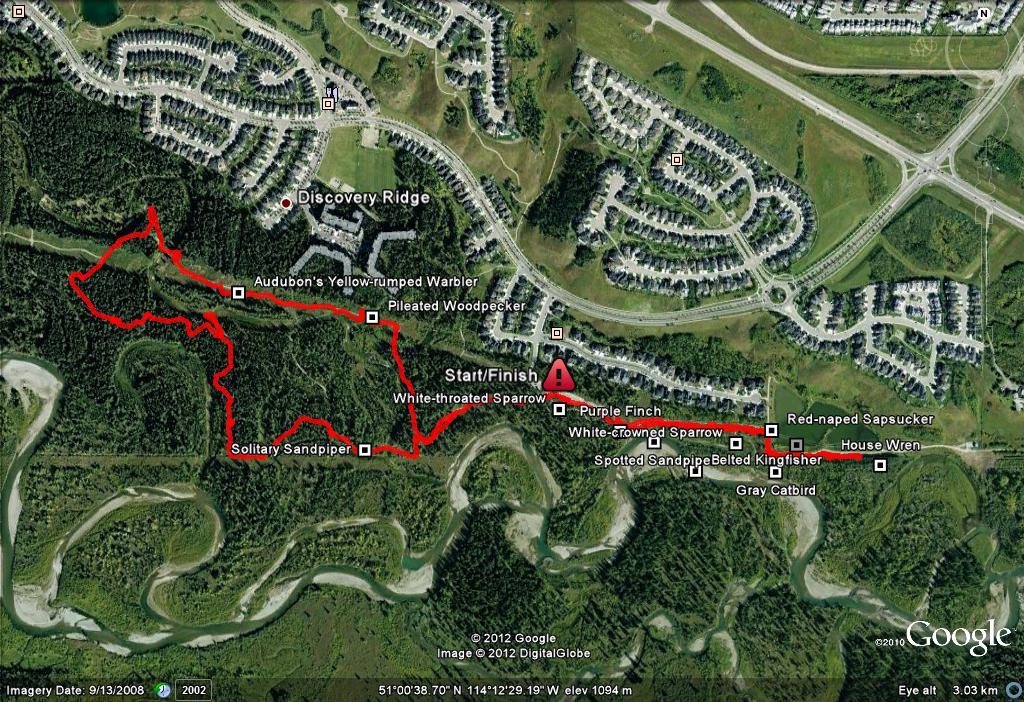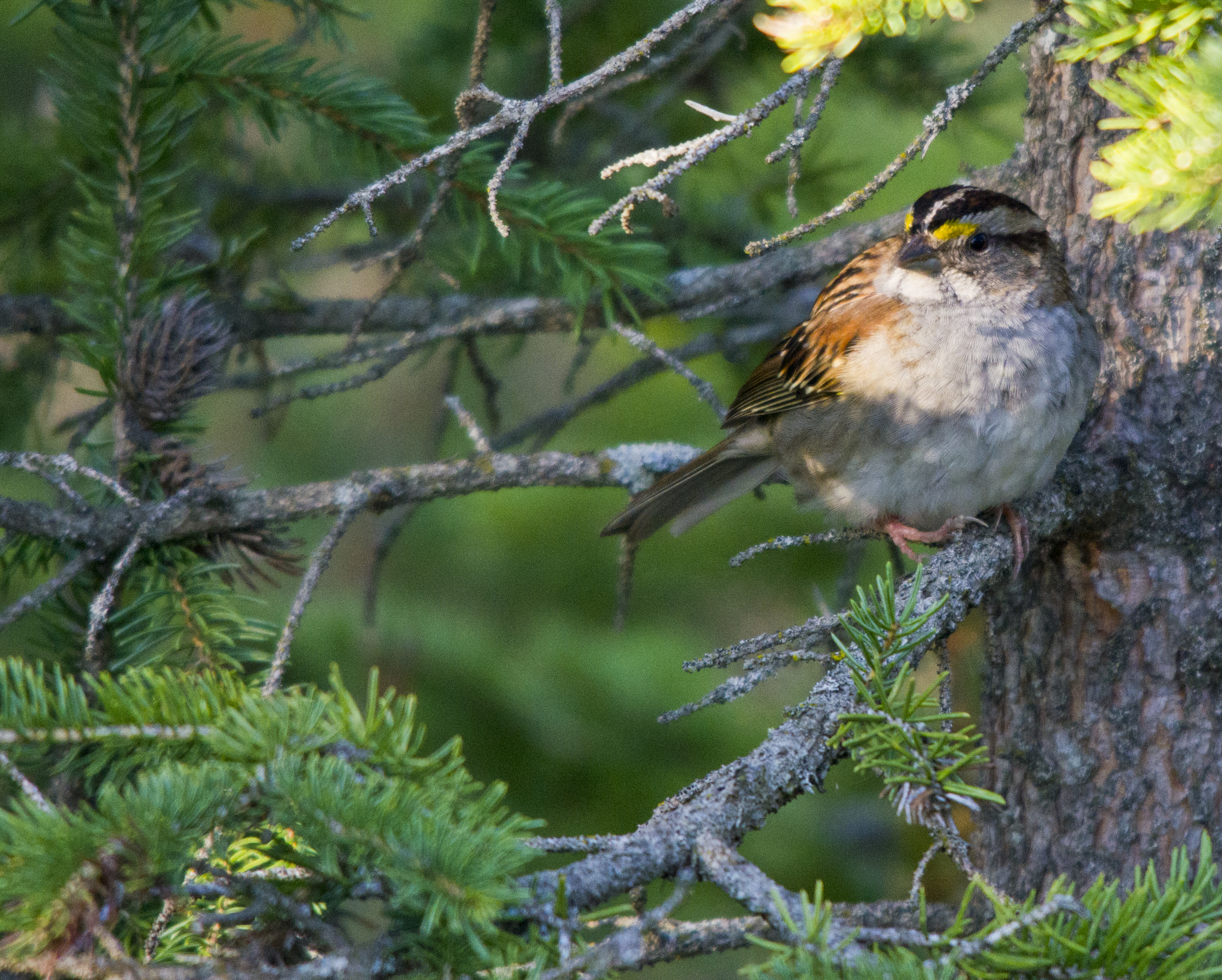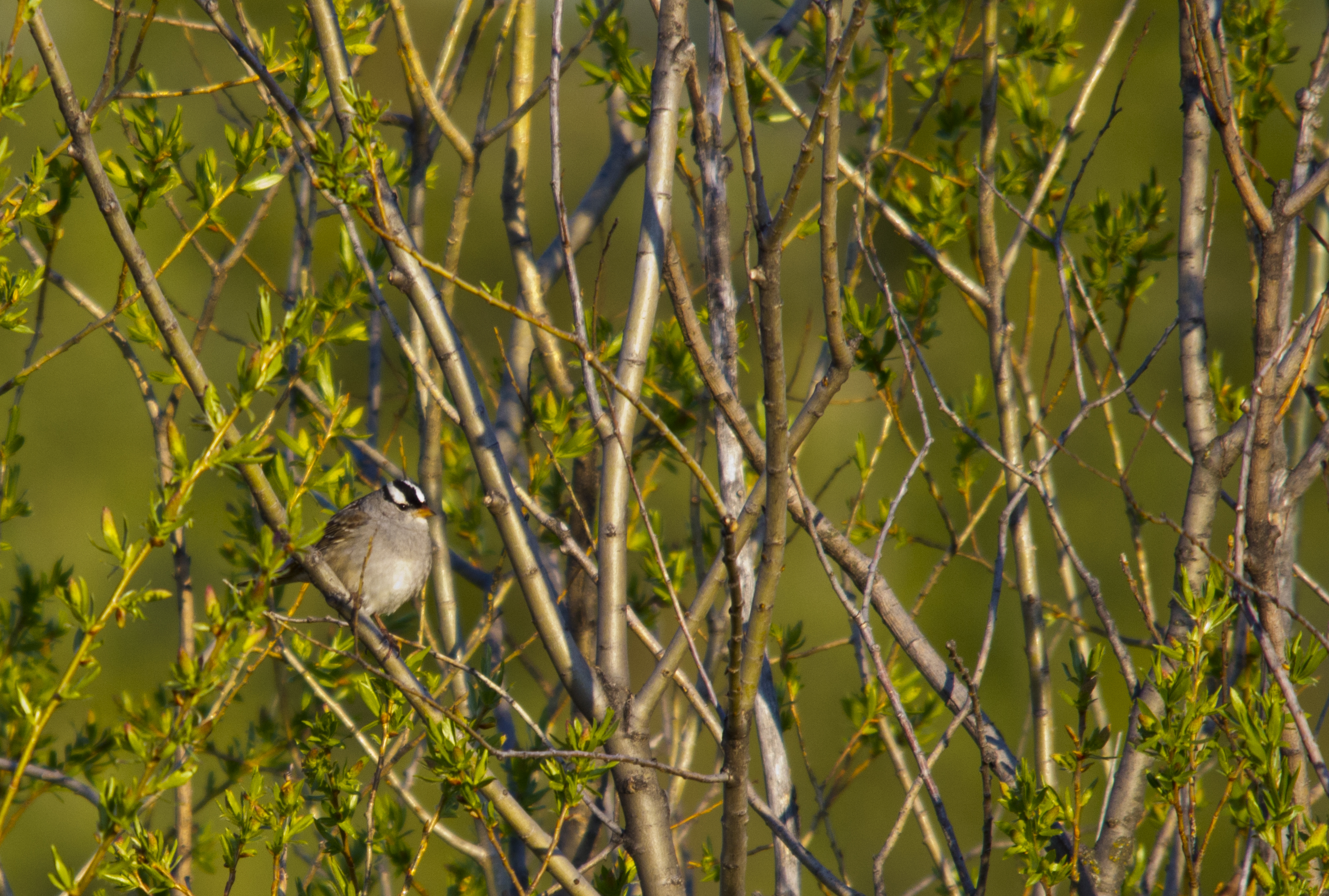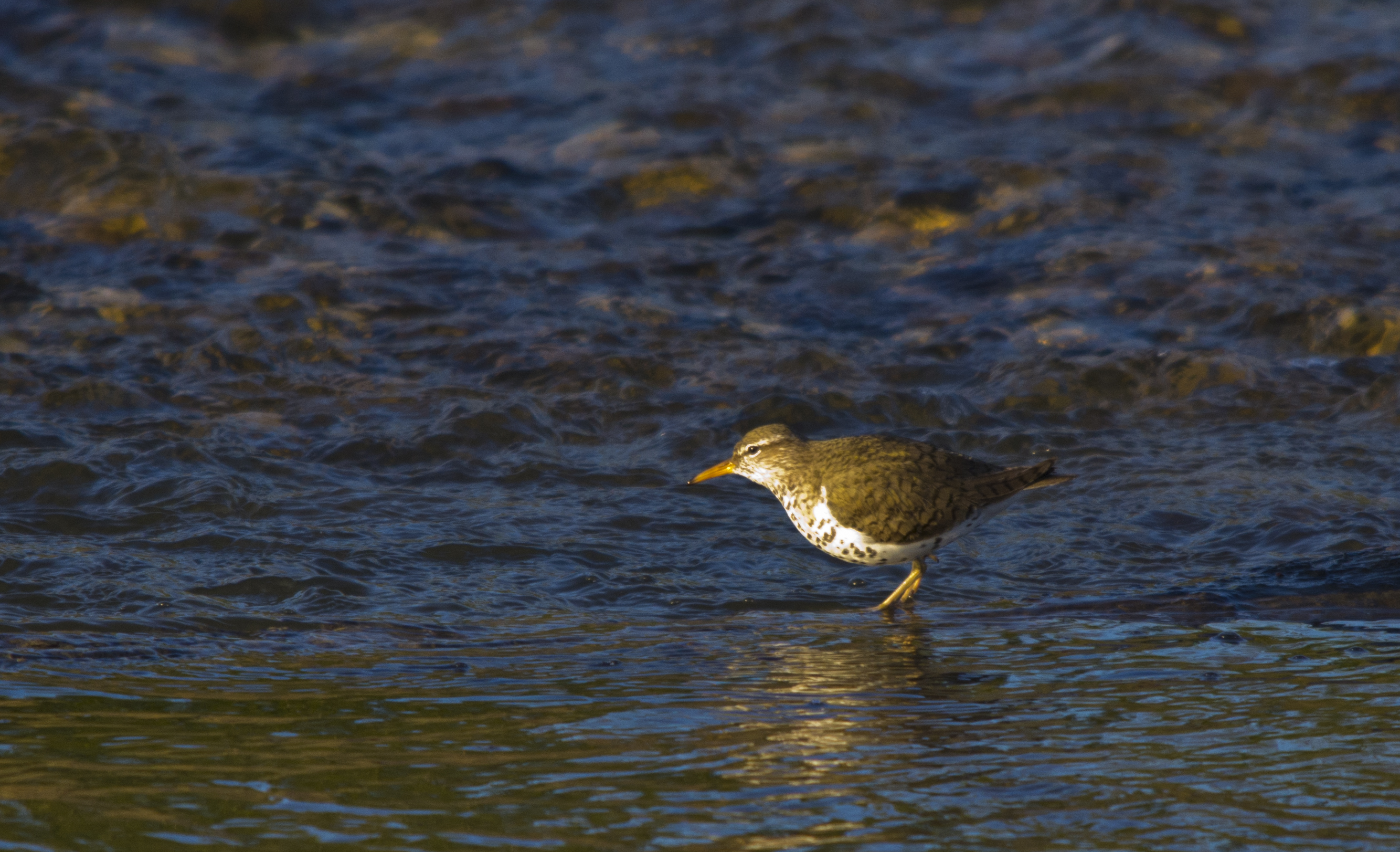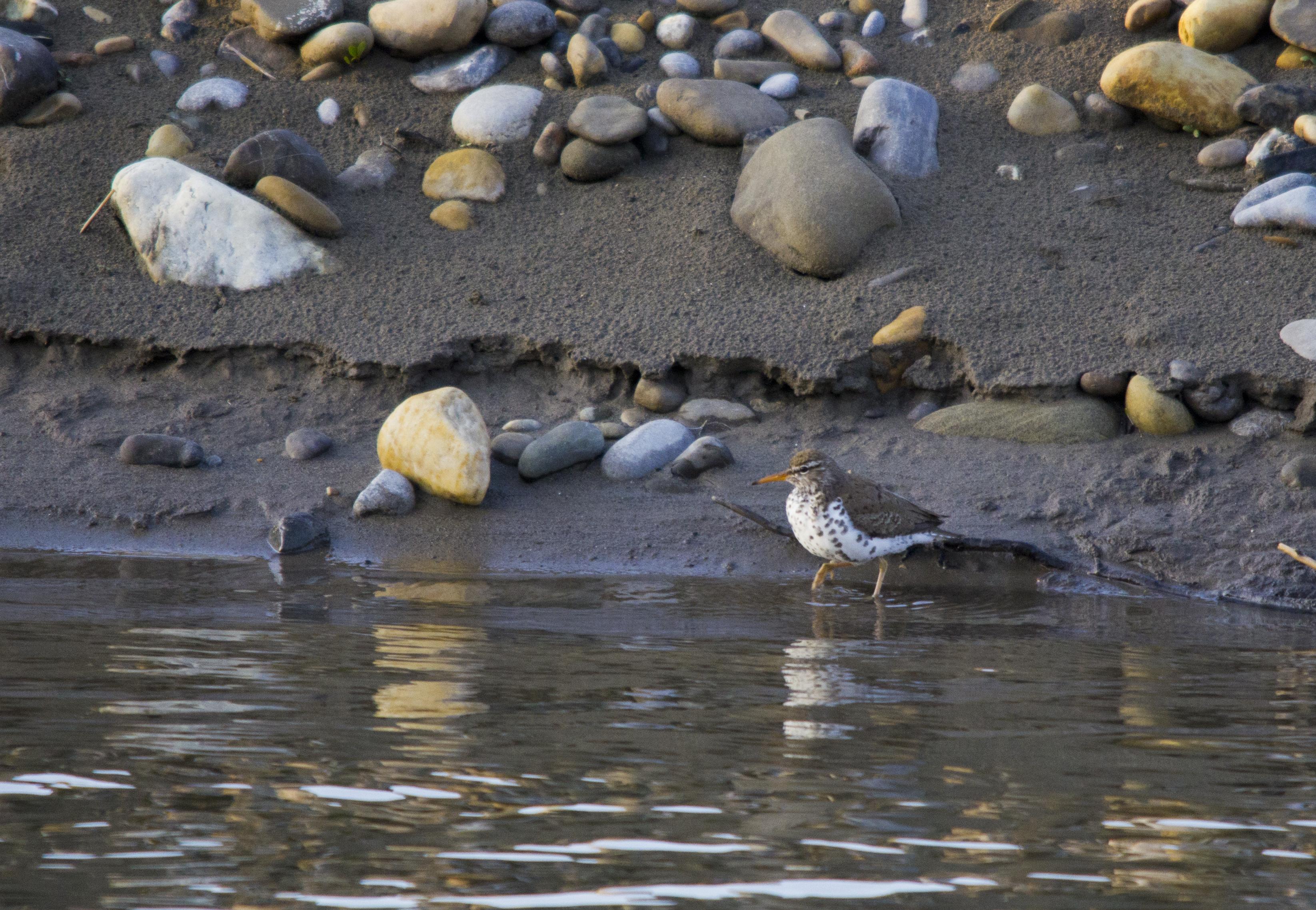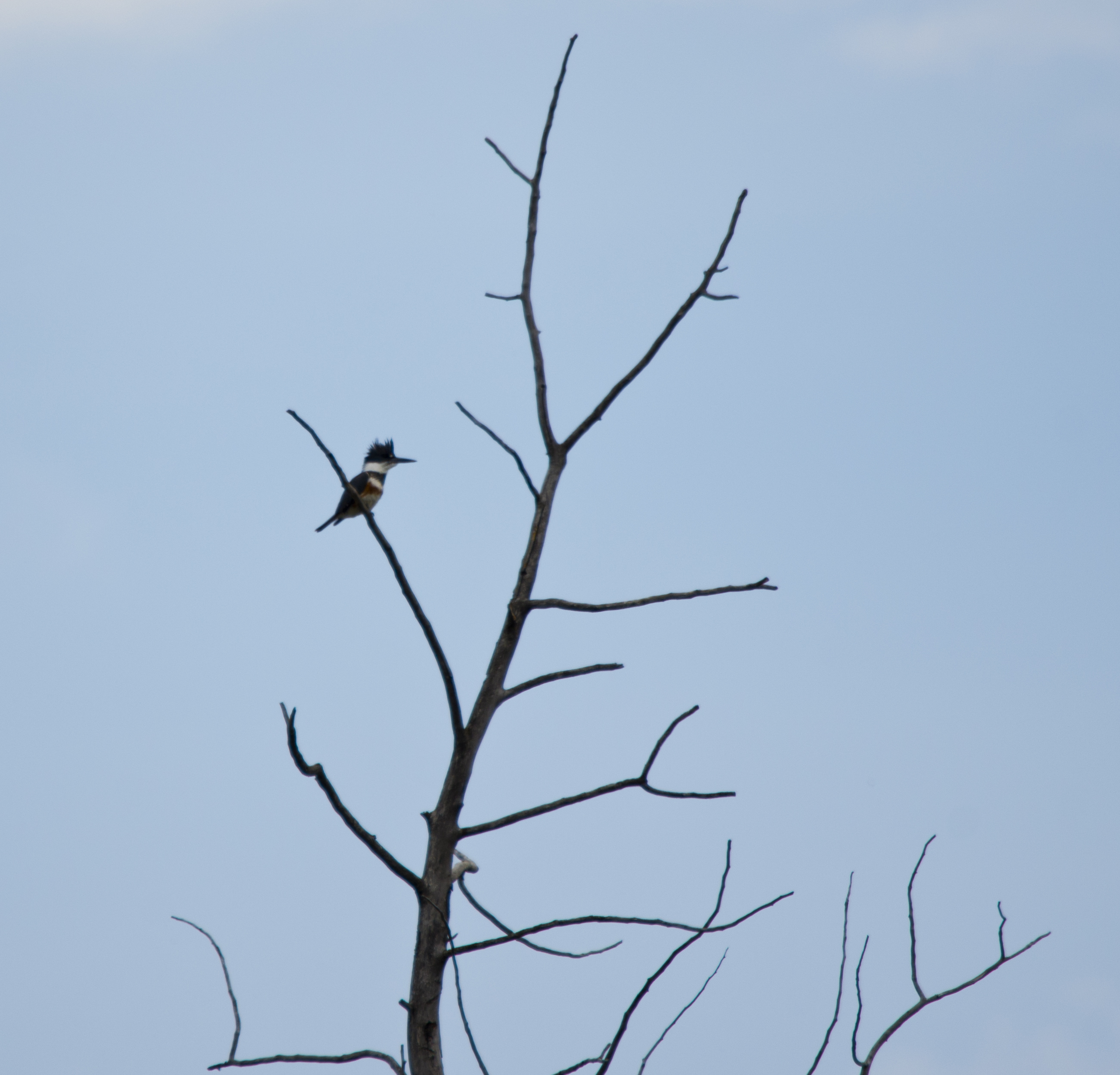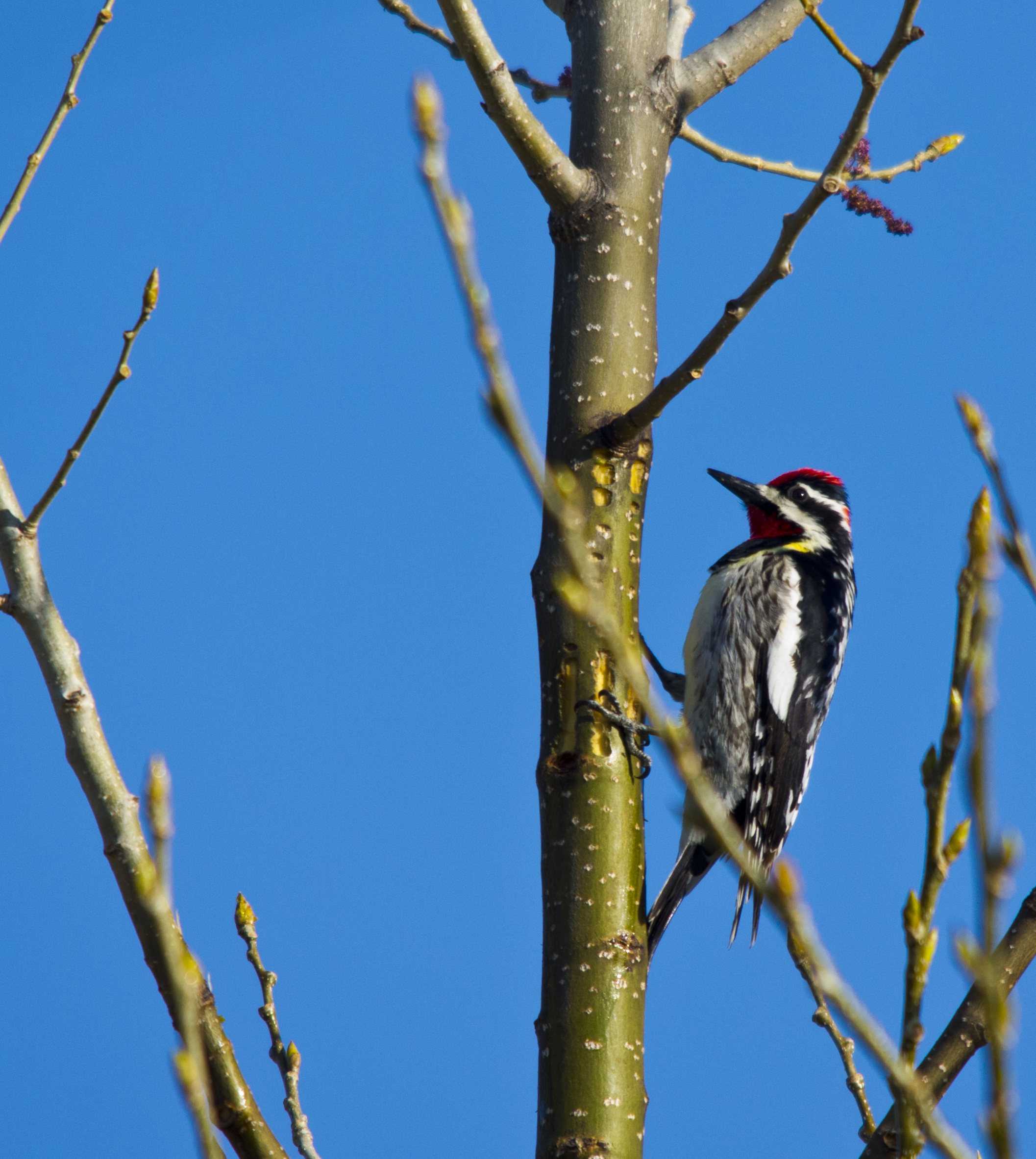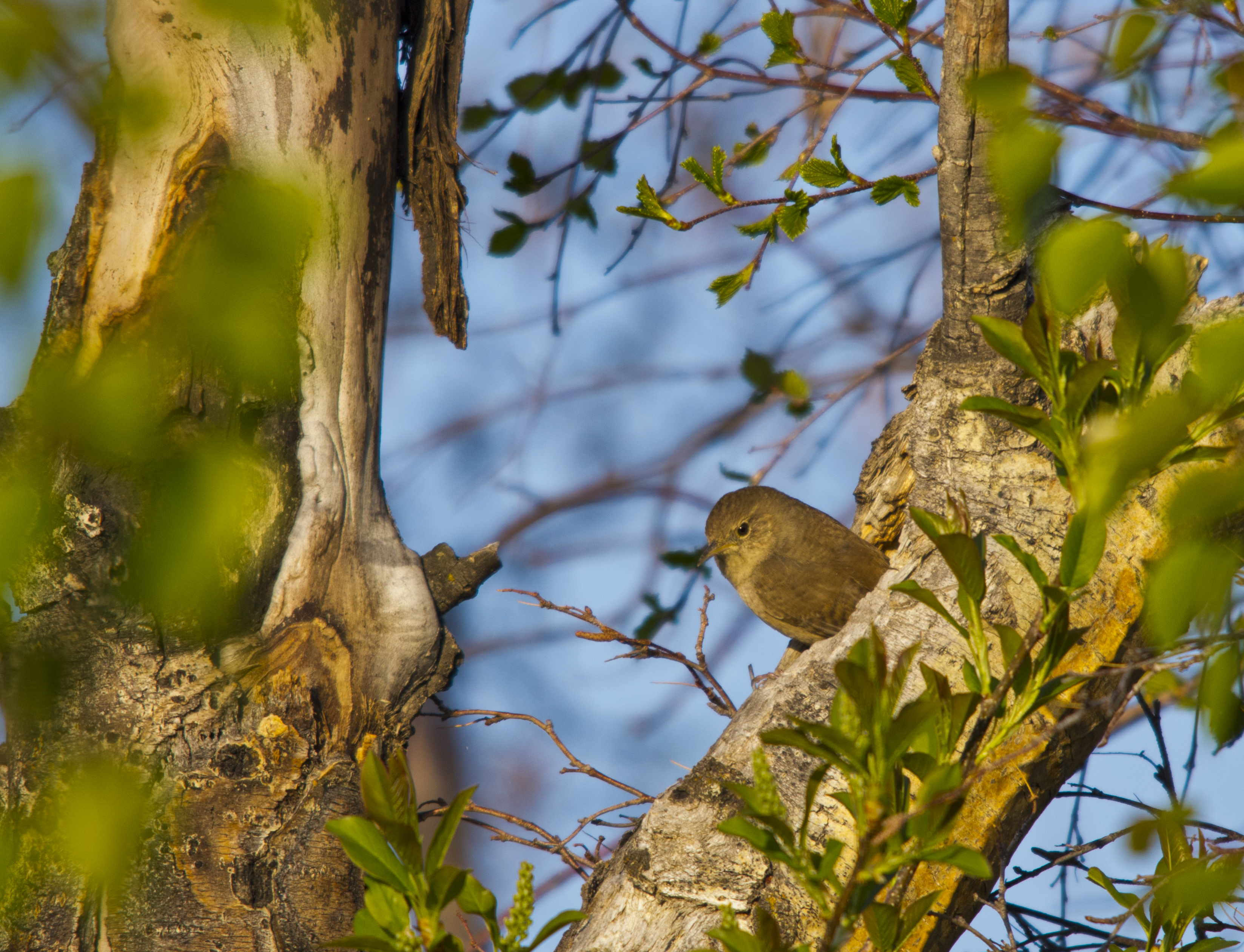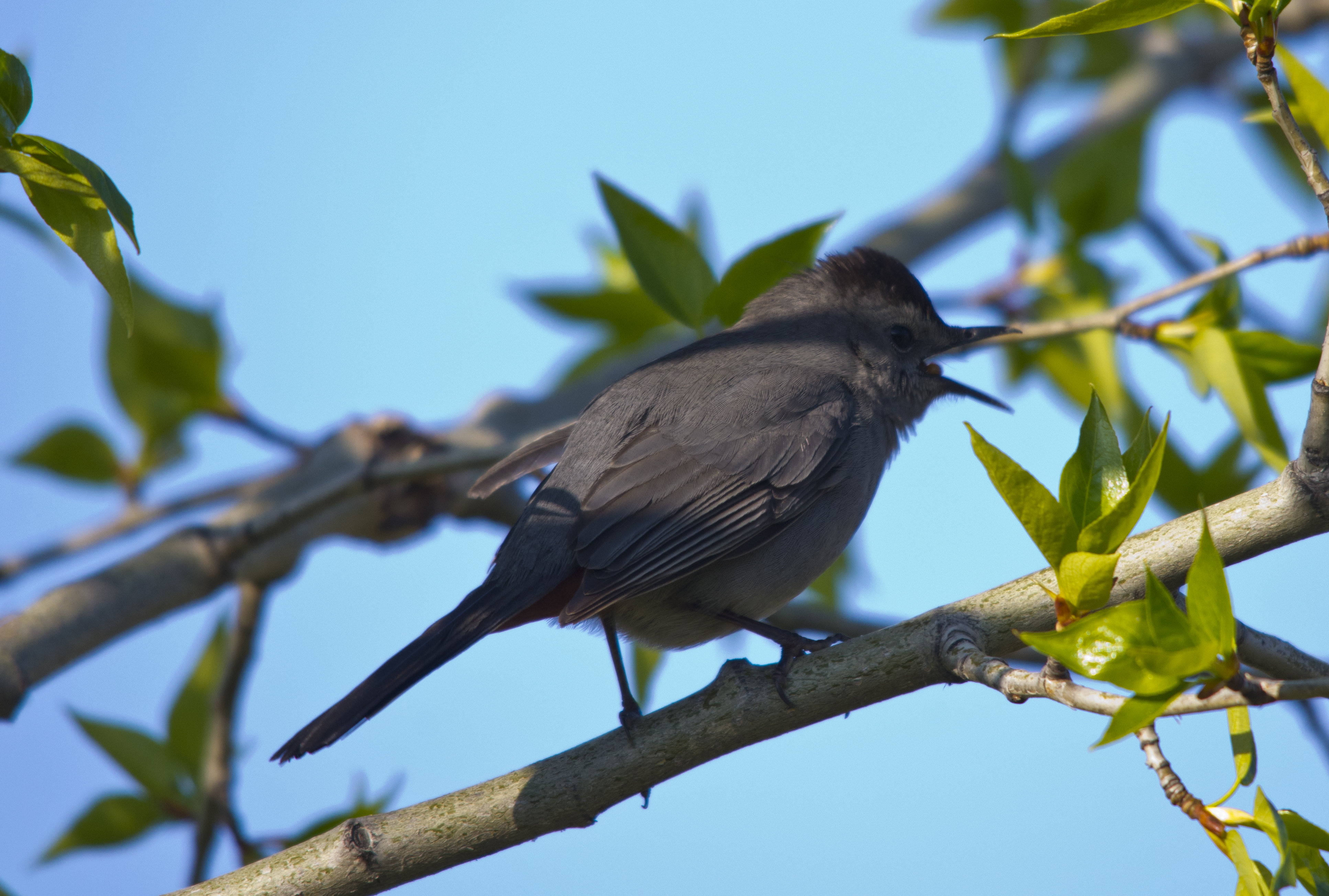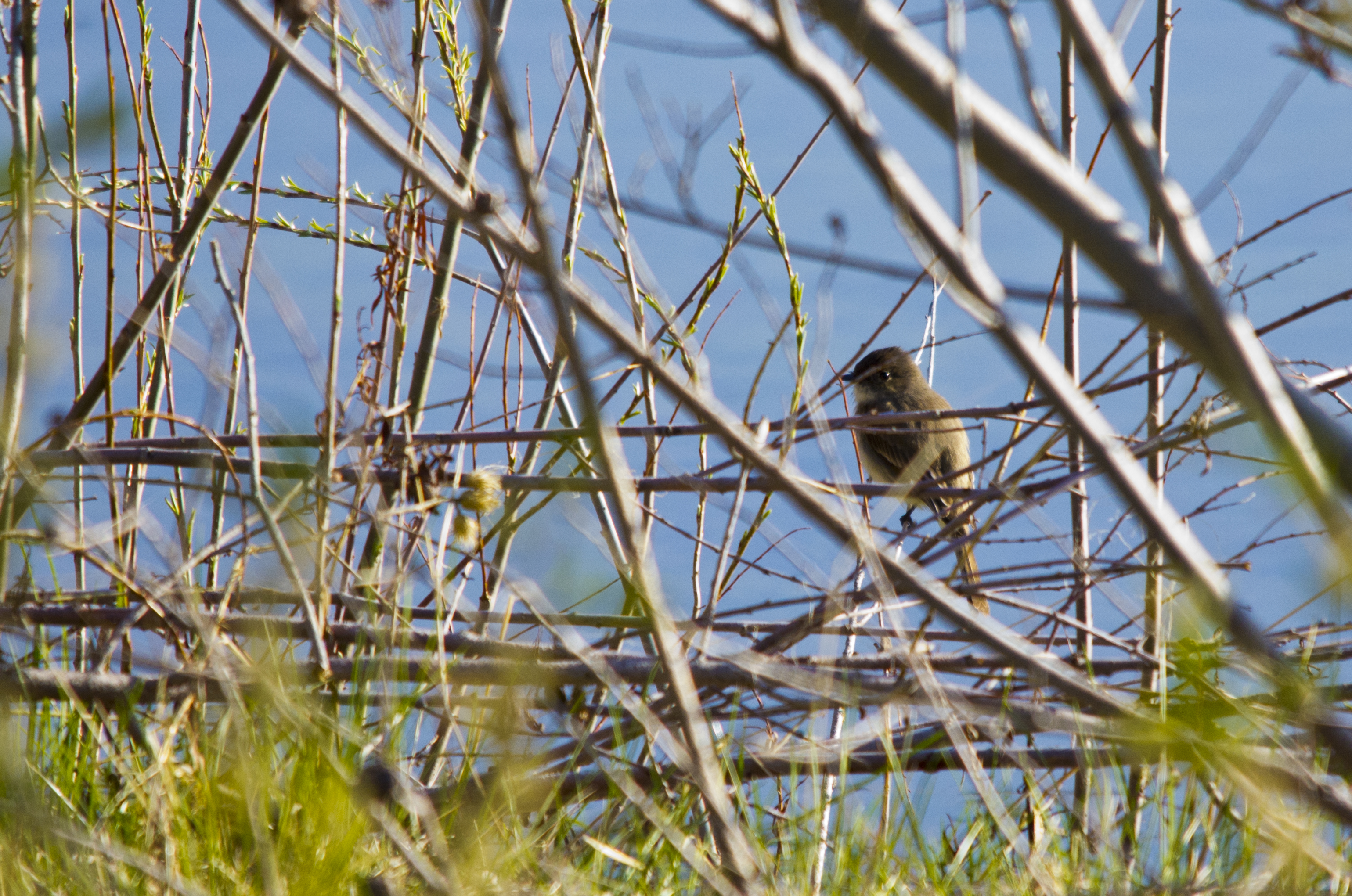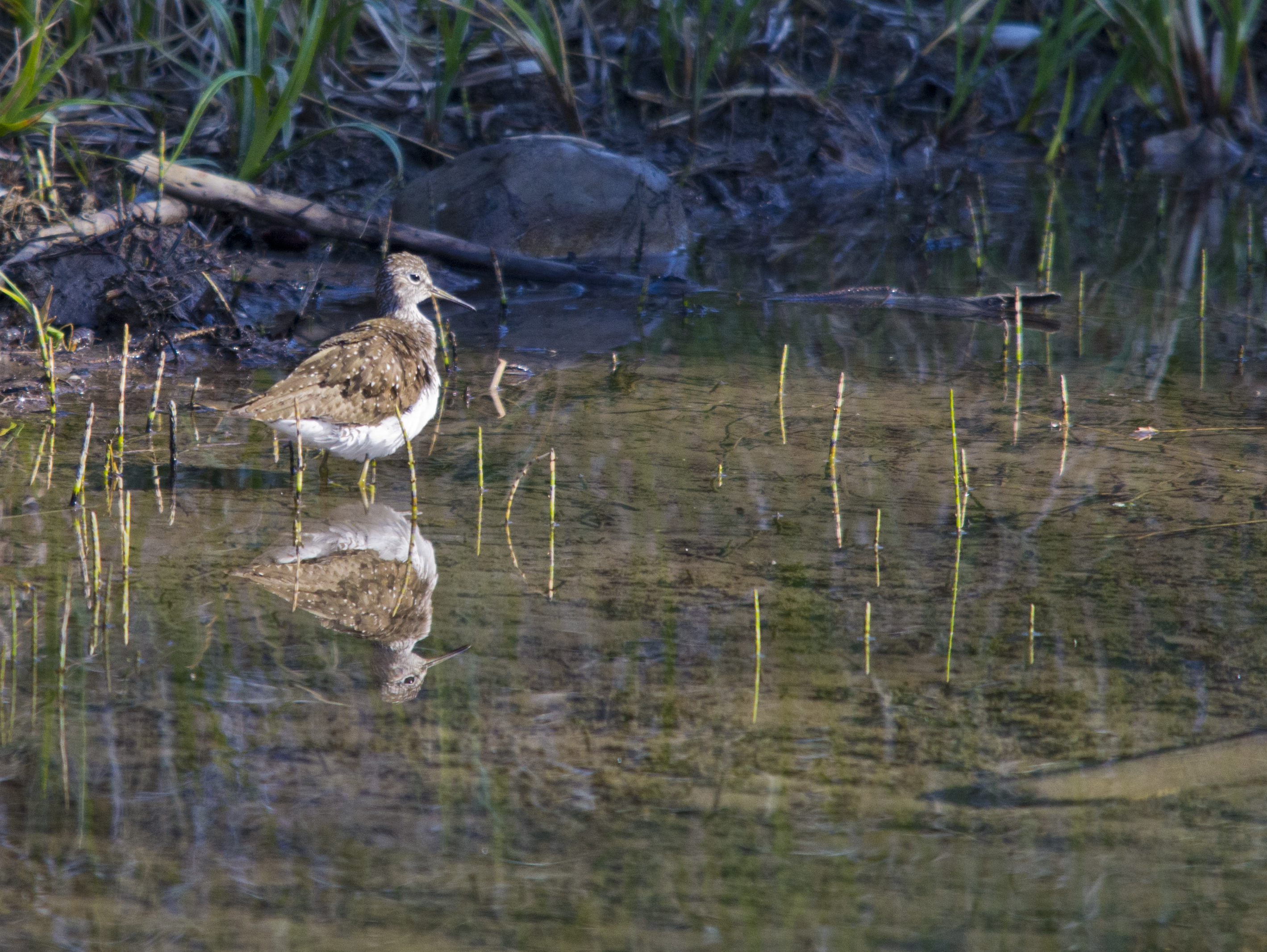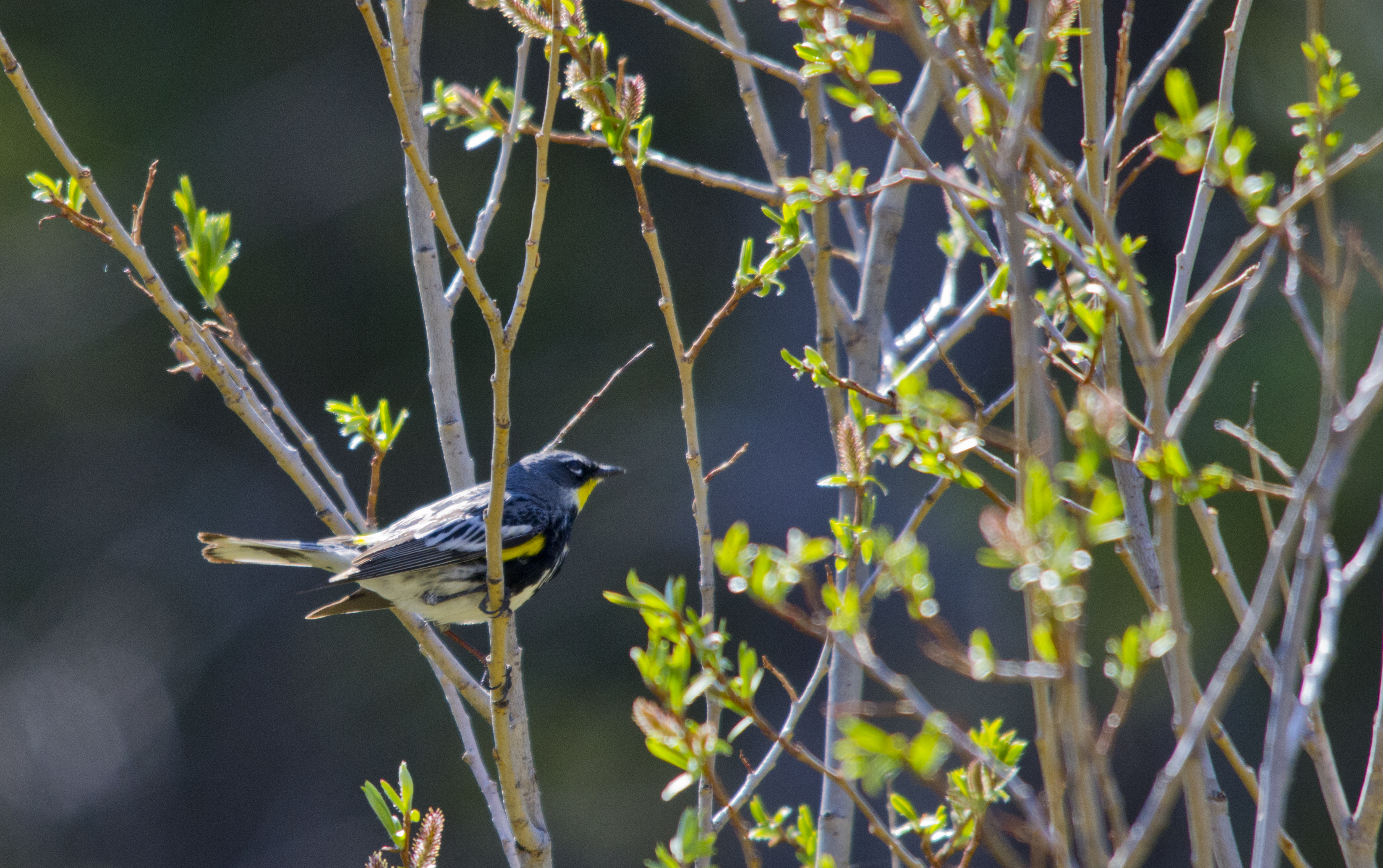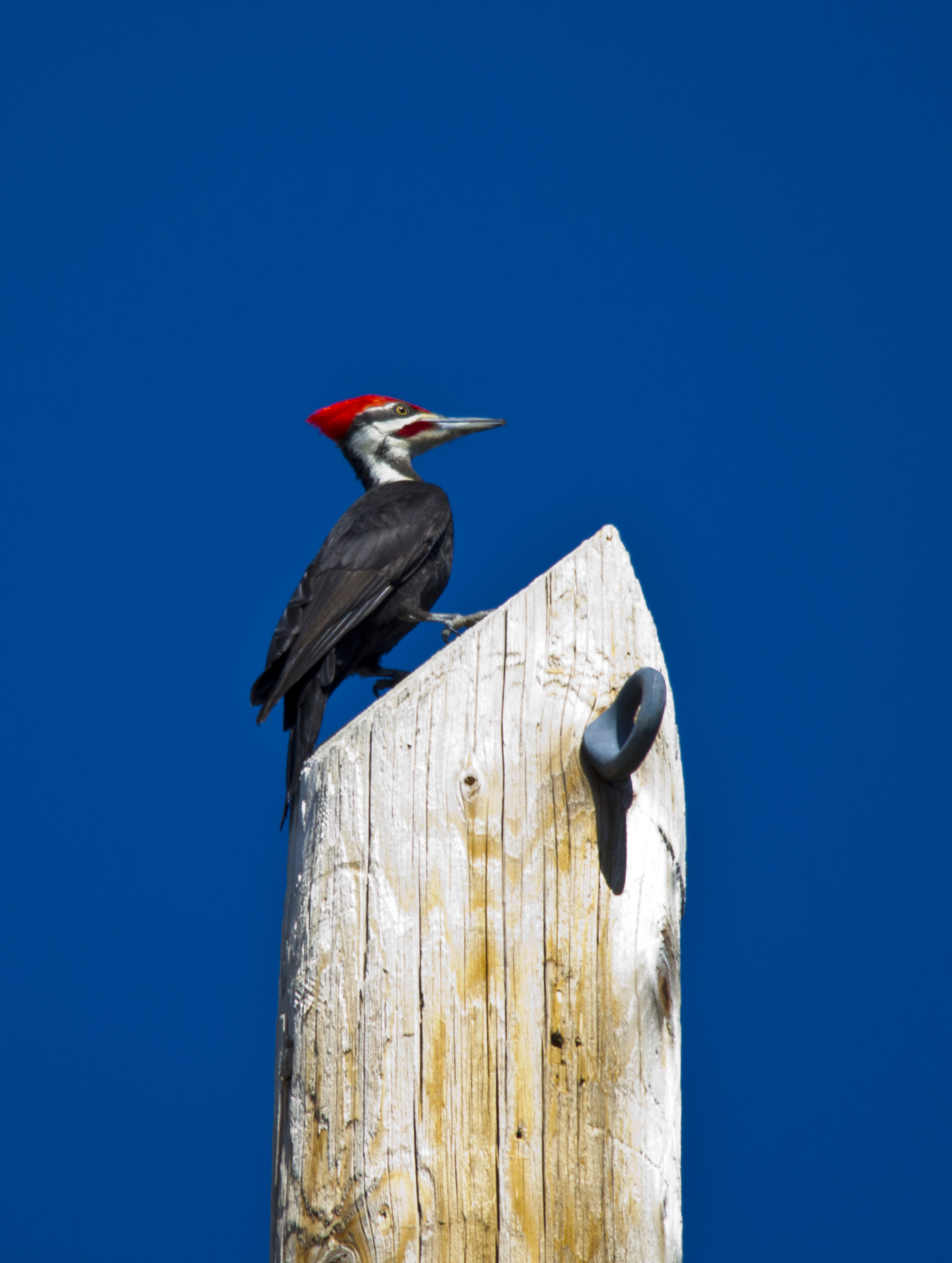Posted by Dan Arndt
Last week’s visit to Fish Creek Provincial Park’s northeast corner was a beautiful, sunny, and bird-filled day. We managed to just tick 50 species in a little over three hours, though photos were few and far between, as most of the birds were highly active in their foraging endeavors and didn’t sit still. Despite that, the few I did manage to capture were quite memorable, (and all new species for my blog posts for the course, as I promised earlier!) Enjoy!
As usual for this route, we met up at the Mallard Point parking lot and car-pooled down to Bankside, giving us some time up near the bushes at the parking lot to tally up 15 species before we even really got “started” on our walk. Blue Jays, Common Grackles, Brown-headed Cowbirds and even a Wilson’s Warbler made for good sightings before the start of our walk. One stop we made as well to add on a few more year-birds for the group were the ponds at Burnsmead, where this Northern Shoveler and his mate were displaying their colors quite proudly, along with about a dozen Red-winged Blackbirds!
As our walk began in earnest at the Bankside parking lot, we headed down towards the river bank and heard our first Ring-necked Pheasant of the day, as well as many Lincoln’s, Song, and Savannah Sparrows, more than a few of which we even had great looks at. We also found both a Red-naped and a Yellow-bellied Sapsucker right near the parking lot, but the Yellow-bellied was the only one to stick around for some photos.
The Savannah Sparrows nearly drowned everything else out in the area surrounding the pathways, almost drowning out the calls of a pair of distant White-crowned Sparrows. This little fellow was singing away to his heart’s content just six feet away from the end of my lens.
We walked onward and found a few raptors right after each other, first a Swainson’s Hawk, then a couple of Red-tailed Hawks, and finally a Great Horned Owl in a spot where we hadn’t ever seen one before. Must have been some good eating around this area earlier in the year. He’s likely raising a family somewhere on Poplar Island right now! This was also the area where we got a brief look at a Western Tanager, and a really nice close approach by a Lincoln’s Sparrow pausing for a drink of water.
As our walk neared its end, we finally, after a few solid hours of tacking on species after species, were allowed the briefest of views of one of the male Ring-necked Pheasants that we’d heard calling throughout the morning. Hopefully I can get a better shot later this season, because this one is terrible!
Good birding! Just remember, by the time you’re reading this on Monday morning, (Victoria Day here in Canada), I’ll be out with Nature Calgary’s annual field trip to find 100 species in the Calgary city limits… in the rain!
